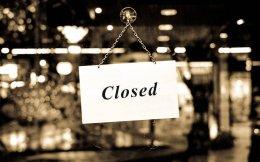“Steve passed away earlier today,†CEO Tim Cook broke the news to Apple employees. They had lost their hero. “We are planning a celebration of Steve’s extraordinary life for Apple employees that will take place soon,†Cook added.
In true Apple style, the company plans to celebrate the life of their beloved icon and won’t give in to the black grief that must be looming large over the company at the moment. But then, it was business as usual for Apple at the launch of its latest iPhone at the Cupertino Campus. And not one word about the failing health of Jobs was uttered even though people must have known by then that the inevitable end was nearing. In many, many years, Apple had hosted a key product launch in the company’s ‘Town Hall’ room, perhaps hoping against hope that Jobs might be able to show up for a few moments. But the legendary jeans-and-turtleneck-clad figure failed to show up.
“Steve's brilliance, passion and energy were the source of countless innovations that enrich and improve all of our lives,†Apple's board said in a statement. “The world is immeasurably better because of Steve.â€
CEOs and industrialists rarely become icons in popular culture worldwide. It is even rarer for a man to command the awe of fans and enthusiasts all over the world, whether they are digital natives of Apple or not. But then, Steve Jobs was not the average run-of-the-mill CEO of a Fortune 100 company.
Born in California in 1955, Jobs was given for adoption by his birth parents, a pair of unmarried graduate students, within a week of his birth. He was adopted by Paul and Clara Jobs, a blue-collar couple who migrated to Mountain View soon after. Jobs’ birth parents had stipulated in the adoption agreement that the boy would attend college, but Jobs decided to drop out of Reed College in Oregon after the first semester. It was not his first act of rebellion and it would definitely not be his last.
Those were interesting days for Jobs and shaped him in many ways as the man he was to become. He had dropped out of college but attended random lectures for the next 18 months or so, on subjects that interested him, feeding his myriad fascination with seemingly disconnected areas of interest (like calligraphy, which would help Jobs when he was working on the Macintosh computer, the world’s first personal computer with a graphical interface). He was penniless and thrived on meals at the local Hare Krishna temple or what he could earn by recycling used soda bottles.
Jobs took a job at Atari in the fall of 1974 because he wanted to come to India and desperately needed to save for the trip. Soon after, he came to India to visit the holy man Neem Karoli Baba in Vrindavan, with a college buddy (Daniel Kottke, who later became Apple’s first employee). He came back to California a Buddhist pescadarian (a vegetarian who eats fish). However, life and vision had not changed much for Jobs. On his return, he teamed up with a friend, another Steve (Steve Wozniak), and soon they were hand-building computers in Jobs’ bedroom and his parents’ garage. The universe was about to get its first ding.
Apple entered the Fortune 500 group at the 411th position in 1983, the fastest ascent of any company in the history of rankings. “I was worth about over a million dollars when I was 23, and over ten million dollars when I was 24, and over a hundred million dollars when I was 25,†Jobs said. Two years later, he was ousted from the company he had helped build, by former Pepsi executive John Sculley – a man he had hired for the role of the CEO.
Never one to give up, Jobs decided to merely rewrite the course of history, this time with NeXT, a company that would sell higher-end computers and hopefully, would put Apple out of business in the long run. Around this time, George Lucas (of the Star Wars fame) was going through a bad divorce and needed money. Jobs took a struggling computer graphics outfit – The Graphics Group – out of his hand, paying him $10 million for the company and subsequently renaming it Pixar. Over the years, Jobs would keep injecting Pixar with money from his own pocket, some $60 million in all. Pixar tried to be, among other things, a high-end graphics hardware developer and kept bleeding money till in 1995, the company partnered with Disney to produce the animated film Toy Story. Incidentally, Toy Story was the first in a string of hits that the partnership had produced.
Apple bought NeXT for $429 million in late 1996. But the company had been struggling in the absence of Jobs, making one product mistake after another, and was on the brink of bankruptcy, looming merely six months away. Morale was low all around and Jobs had encashed a part of his stock holdings in June 1997 (he had received 1.5 million shares as part of the NeXT deal). At that point, the board decided that they had to bring Jobs back as the interim CEO, to begin with. In July 1997, Jobs walked into the company’s boardroom wearing shorts and sneakers. He was setting foot inside the premises after 11 years.
The rest, as they say, is history. Jobs turned the ailing company to a point where it has more cash reserves than the American government. And in the process, Apple has disrupted the way we listen to music with its iPods, removed keypads from mobile handsets with the iPhones and changed the face of computing with iPads. That is, on top of assembling the world’s personal computers with graphical interface. Jobs himself is listed as either primary inventor or co-inventor in 338 US patents or patent applications related to a range of technologies – from actual computer and portable devices to user interfaces (including touch-based), speakers, keyboards, power adapters, staircases, clasps, sleeves, lanyards and packages.
Apple Left To Carry Jobs’ Legacy
Steve Jobs had passed on the CEO’s mantle to compatriot Tim Cook on August 24 while opting for a lighter, non-executive role of as chairman of the company’s board. In an open letter to the Apple community and the company’s board of directors, Jobs wrote, “I have always said if there ever came a day when I could no longer meet my duties and expectations as Apple’s CEO, I would be the first to let you know. Unfortunately, that day has come.â€
It has been just over a month since. If Apple’s iPhone 4S launch is any indicator, Cook is more than up to the task of steering Apple. All he will have to do is get over the handicap of not being born as Steve Jobs.
The Indian Connection
Was Steve Jobs disillusioned with India? It is difficult to say. Apple, as a company, does not seem to have a strategy road map for the Indian subcontinent, unless that strategy is not to have an explicit strategy.
Steve Jobs did have close personal ties with India. When Jobs dropped out of Reed College as a student in Oregon, money was tight and he frequented the local Hare Krishna temple for free food to keep body and soul together (to know more, read Inside Steve’s Brain by Leander Kahney). Talking of books, his official biography (Steve Jobs by Walter Isaacson) is due to come out later next month. Jobs later took a job at Atari, one of the pioneering game companies, to save money for a trip to India. But beyond his broad interest in Buddhism, that Indian connection did not mature into business interest.
However that may be, the tech czar has always been popular in India and messages have been pouring in, mourning the loss of Jobs. Tweets, Facebook status updates and the like are not just coming from tech communities located in isolated pockets of Bangalore, Hyderabad or Pune – but from homemakers in Kolkata and school students in Delhi. Someone is talking about his first Apple computer. Another business executive has written that he did not know about Jobs’ involvement with Pixar.
“No one wants to die. Even people who want to go to heaven don’t want to die to get there,†Steve Jobs told the crowd at the 2005 commencement address at Stanford University. Too bad heaven has no favourites.
Rest in peace, Steve. You have lived your vision well and the world will miss you.






